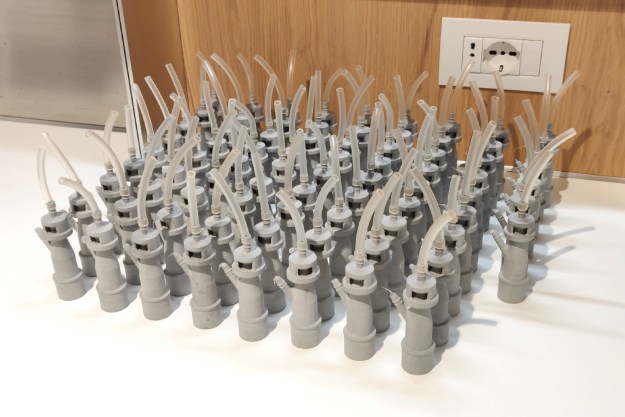 Before modern technology changed everything, all we had to look at when a loved one was pregnant was a bulging belly, steadily increasing in size as the months ticked by. Then along came ultrasound technology, giving proud parents-to-be the opportunity to show off fuzzy pictures of their child while still inside the mother.
Before modern technology changed everything, all we had to look at when a loved one was pregnant was a bulging belly, steadily increasing in size as the months ticked by. Then along came ultrasound technology, giving proud parents-to-be the opportunity to show off fuzzy pictures of their child while still inside the mother.
Ultrasound videos soon followed, with some unborn babies becoming YouTube stars before they’d even taken their first breath.
But things have moved on again. Indeed, the latest advancement in fetal imaging technology will either excite you, make you feel a little queasy or simply freak you out.
Japanese engineering firm Fasotec and Tokyo-based Parkside Hiroo Ladies Clinic have just launched a service that will give pregnant women a 3D model of their unborn child inside their uterus (yes, the uterus forms part of the model).
DigiInfo TV reported that it is the first service of its kind in the world.
An employee at the clinic said it trialed the service with three expectant mothers, all of whom said how wonderful it was to see how their little one looked prior to being born.
“They also enjoyed looking at the model after giving birth, thinking, ‘This is how my baby looked inside me’ and recalling how it felt to be pregnant,” the employee said.

So how do they create this 3D fetus? Well, according to DigiInfo TV, it’s made using a technology called BioTexture, which carries out 3D processing of image data, in this case taken from an MRI scan.
A 3D printer then constructs the model, spraying two resins at the same time – “transparent for the mother’s body and white for the baby.”
The service, which the clinic recommends the expectant mother uses as late into her pregnancy as possible so that a more detailed model can be made, starts at 100,000 yen ($1,270), though this doesn’t include the cost of imaging. The clinic is planning to expand its service by offering a wider range of model shapes and sizes.
If you’re a parent-to-be, do you like the idea of presenting friends with a 3D model of your unborn baby, or would you prefer to stick with an old-fashioned ultrasound pic?
Editors' Recommendations
- 3DMakerpro’s Seal is a pocket-sized scanner to make next-gen precision 3D prints
- Need a last-minute Halloween costume? Check out these 3D-printable getups
- The future of making stuff: Inside the evolution of 3D printing with Formlabs
- Father’s Day Gift Idea: These cheap 3D printers are on sale for less than $300
- 3D printing lets hospitals make ventilator substitutes with common equipment


